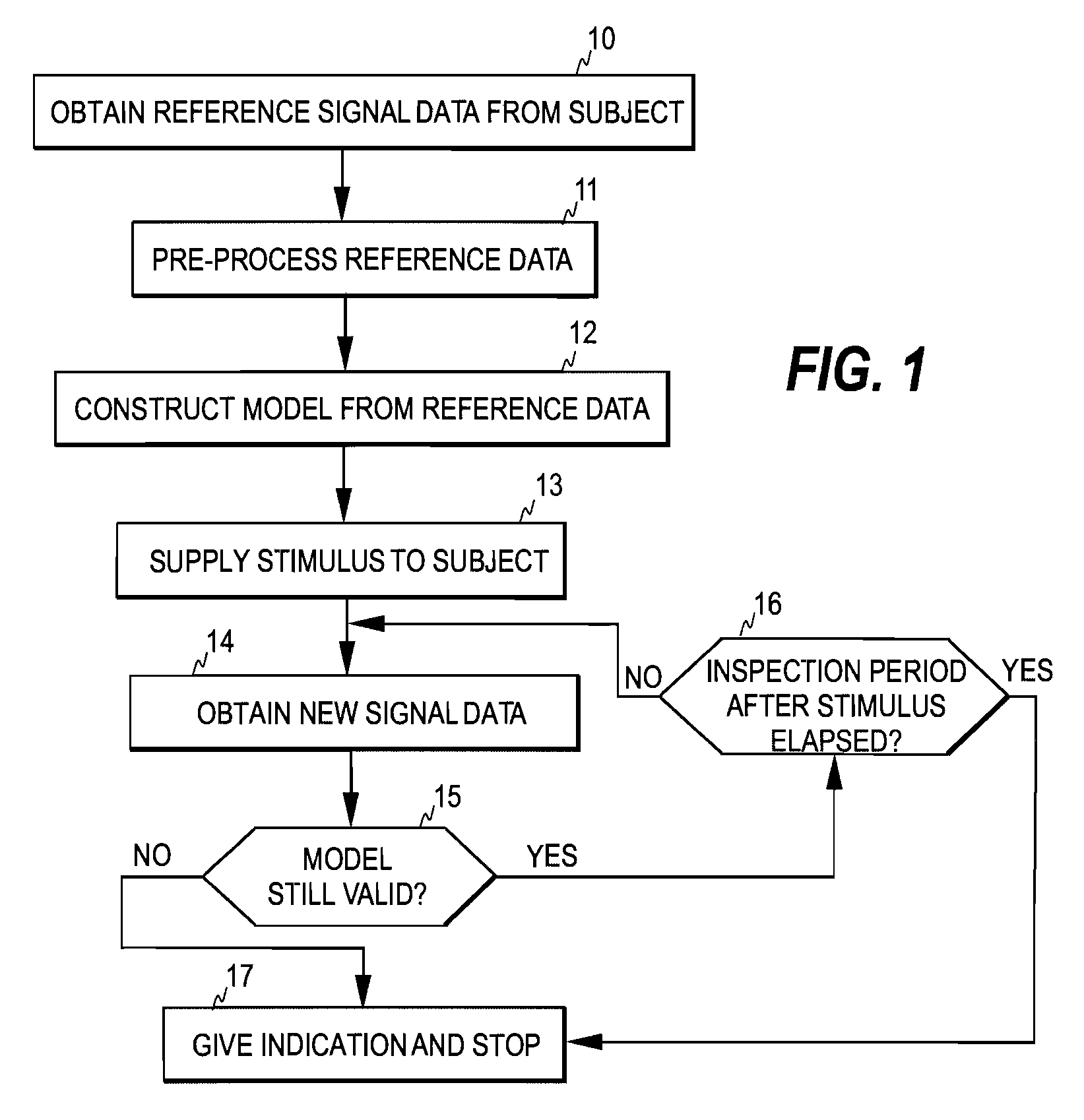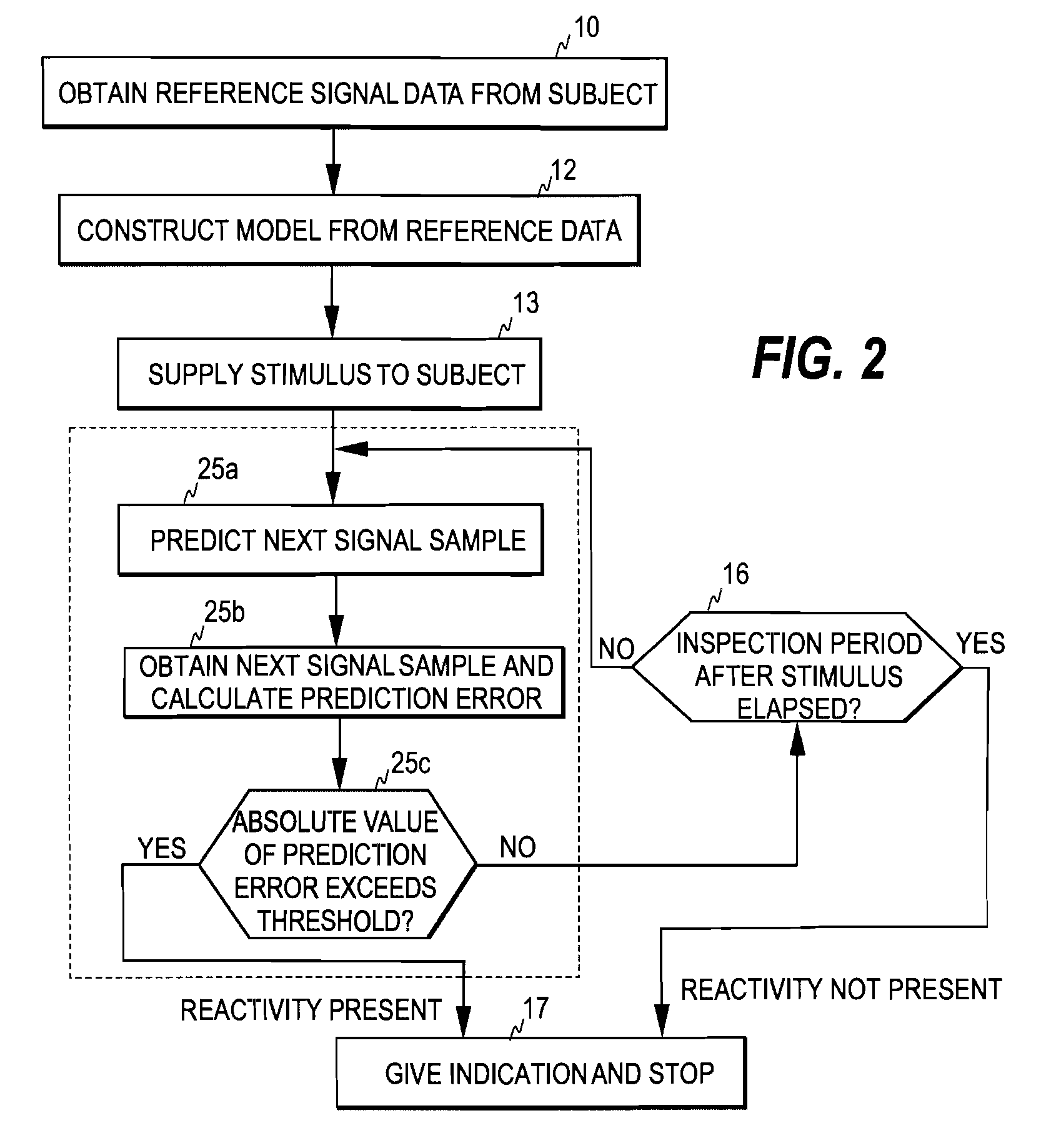Measurement of EEG reactivity
a reactivity and eeg technology, applied in the field of eeg reactivity measurement, can solve the problems of patient inability to respond, inapplicability of observational scoring system, and disturbed brain function and resulting eeg
- Summary
- Abstract
- Description
- Claims
- Application Information
AI Technical Summary
Benefits of technology
Problems solved by technology
Method used
Image
Examples
Embodiment Construction
[0038]As discussed above, the present invention rests on adaptive segmentation of the physiological signal for detecting changes in the stationarity of the signal. In adaptive segmentation, the signal is not processed in fixed length time windows termed epochs, as is common in EEG analysis, but rather on a sample-by-sample basis.
[0039]FIG. 1 illustrates one embodiment of the present invention. An EEG signal measured from a patient (step 10) is first digitized to obtain a time series of EEG signal data. The sampled EEG signal may then be filtered to exclude high- and low-frequency artifacts (step 11). The signal data obtained initially from the patient may also be termed reference signal data in this context, since it is employed at step 12 to construct a valid signal model for the current time series. The signal model constructed enables prediction of signal values for the time series and a valid signal model meets predetermined criteria in the prediction. For example, the signal mo...
PUM
 Login to View More
Login to View More Abstract
Description
Claims
Application Information
 Login to View More
Login to View More - R&D
- Intellectual Property
- Life Sciences
- Materials
- Tech Scout
- Unparalleled Data Quality
- Higher Quality Content
- 60% Fewer Hallucinations
Browse by: Latest US Patents, China's latest patents, Technical Efficacy Thesaurus, Application Domain, Technology Topic, Popular Technical Reports.
© 2025 PatSnap. All rights reserved.Legal|Privacy policy|Modern Slavery Act Transparency Statement|Sitemap|About US| Contact US: help@patsnap.com



